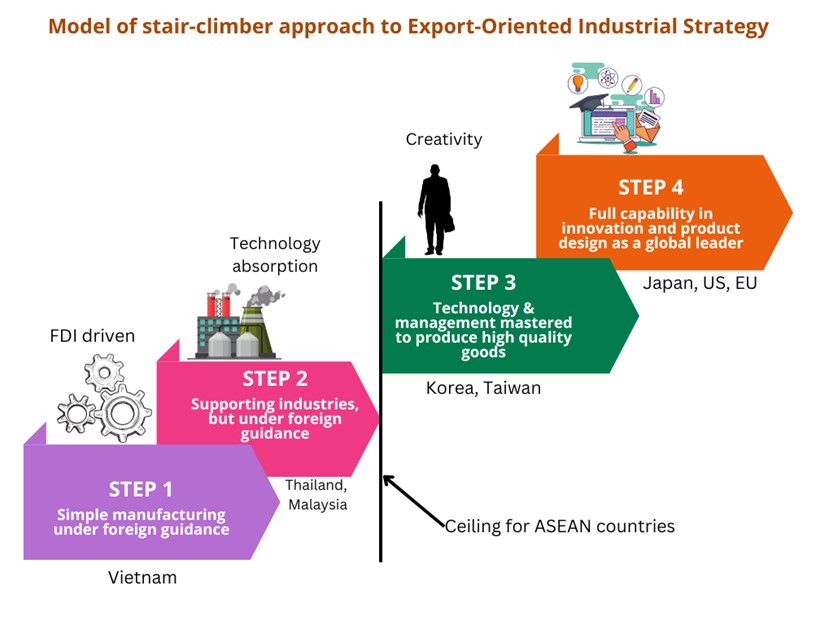Building bridges: Capitalising on strategic, Africa-focused partnerships for sustainable prosperity

DOI reference: 10.1080/13673882.2024.12466419
By Titus Apiyo (LinkedIn; email) and Paul N. Ngang (LinkedIn; email), Thomas More University of Applied Sciences, Postgraduate in African Business Studies, Mechelen, Belgium.
Africa is currently facing various economic challenges that necessitate immediate and resolute action. These challenges encompass a bulging youth population, costly debts, debt defaults, energy shortages, global economic shocks, and the impact of climate change. To address these pressing issues effectively, African nations must reinvigorate Africa-centred initiatives. One such initiative, which is the focus of this article, is the Africa Continental Free Trade Area (AfCFTA). The initiative was conceived in 2012 by the African Union and aims to create a single market for goods and services, thereby expanding intra-Africa trade. Eight African countries have participated in the Initiative since February 2022 (African Union, 2023). The goods of exchange have included ceramic tiles, batteries, tea, coffee, processed meat products, corn-dried fruits, and sisal fibre, among other products.
Individual countries continue to make pragmatic efforts to align their national policies with the AfCFTA. However, more work still needs to be done, as intra-African trade only accounts for a low share of the region’s total trade, currently at only 17% (Mold, 2022). Africa must rethink strategic ways of fostering regional/country partnerships within this framework and identifying opportunities that present themselves with emerging technologies such as AI. This article examines these strategic partnerships and presents opportunities that exist.
Strategic remodelling of economies for specialization and complementary trade
Intra-Africa trade is characterised by more manufactured and processed goods, leading to more knowledge transfer and value creation (World Trade Organisation, 2017). This trend can be capitalised better by individual countries strategically positioning themselves economically and trading complementary goods. An effective model to follow would be shifting towards Export-Oriented industrialization (EOI), with Africa as the primary market. EOI is a trade and economic policy that aims to speed up the industrialization process of a country by exporting goods for which it has a comparative advantage (Karunaratne, 1980; Krainara, 2007; Matambalya, 2014; Akhile, 2015). Consequently, as the African markets are liberalized, countries will set themselves up for success by processing complimentary high-demand and low-capital goods to trade with each other. The EOI model in Africa would follow a stepwise (Figure 1) development from low capital, labour-intensive industries (like leather goods, fashion accessories, woodwork, etc.) to high technology and specialized labour industries.
Figure 1: Export-oriented industrialisation strategy model (EOI)

Source: ISI and Raw Material Dependency: “Twin Killers” of Economic Potential of African Countries. Read more at Unleash African Trade
Export-oriented industrialization will create a strong supply chain connection throughout Africa, promoting sustainable economies and shared prosperity in the long term. For instance, South Africa, which currently specializes in refining precious metals like gold and platinum, could benefit from importing copper from the Congo. This copper would be essential for manufacturing car wires. Tanzania could focus on car seat cover manufacturing, taking advantage of Ethiopia’s growing textile industry, which has access to high-quality cotton. In addition, Liberia could process rubber latex and provide it to Ivory Coast for rubber sheet processing. Ivory Coast could supply Nigeria with rubber sheets for its expanding car manufacturing industry. Rubber sheets could also support low capital- and labour-intensive industries that produce gaskets, hoses, seals, and more. South Africa, with its diverse industrial base, could use processed rubber to make footwear and other consumer goods like rubber gloves, shoe soles, or toys. These are just a few examples of how export-oriented industrialization could promote interdependence within Africa and lead to long-term sustainable development.
Potential Application of AI in African Continental Free Trade Area
One immediate challenge that presents itself in the advent of open markets in Africa is the vast amounts of data that will need to be processed to inform policies for further improvement. Fortunately, applying Artificial Intelligence (AI) algorithms in large and complex data sets presents an opportunity. AI technologies can optimize supply chain operations, e.g., integrating blockchain technologies to effect smart contracts and reduce lead time for export and import within Africa. Also, AI-driven market intelligence tools can collect and analyse data from diverse African sources, providing real-time insights into market trends and consumer preferences and translating languages, facilitating seamless trade within the continent. Lastly, AI will ensure trade compliance by analysing trade data to detect discrepancies and enhance transparent practices within the AfCFTA. In terms of policies, the African Union has released its Data Policy Framework in 2022 that guides member states in creating appropriate national and regional data policies. The framework promotes a shared approach in integrated African data ecosystems and encourages leading AI experts to be seconded to governments (Diop, 2023). Taking advantage of this policy to incorporate AI applications will be a step in the right direction.
Conclusion
In conclusion, Africa faces numerous economic challenges, but the AfCFTA presents more opportunities for the continent. To take advantage of these opportunities, African nations must prioritize strategic partnerships, identify complementary trade partners, and shift towards export-oriented industrialization. Through these measures, Africa can promote sustainable economies, increase intra-Africa trade, and support long-term and more sustainable social and economic development.
References
African Union (2023). Africa Integration Day 2023.
Akhile, J. Sr. (2015). Isi and raw material dependency: “Twin killers” of the economic potential of African countries (part 3 of 8). Unleash African Trade.
Diop, M., N., (2023). How a Pan-African Roadmap Can Unlock the Potential of AI. Tony Blair Institute for Global Change (TBI).
Matambalya, F. A. (2014). 12 Pathways to industrialisation in Africa. African Industrial Development and European Union Co-operation: Prospects for a reengineered partnership, 334.
Karunaratne, N. D. (1980). Export Oriented Industrialisation Strategy. Intereconomics, 5.
Krainara, C. (2007). Export-Oriented Industrialization (EOI): Arguments for and Against What Have Been Experienced of Developing Countries With Regard to EOI.
Mold, A. (2022). The economic significance of intra-African trade. Brookings Africa Growth Initiative.
World Trade Organisation (2017). Promoting connectivity in Africa. The role of Aid for Trade in boosting intra-African trade.